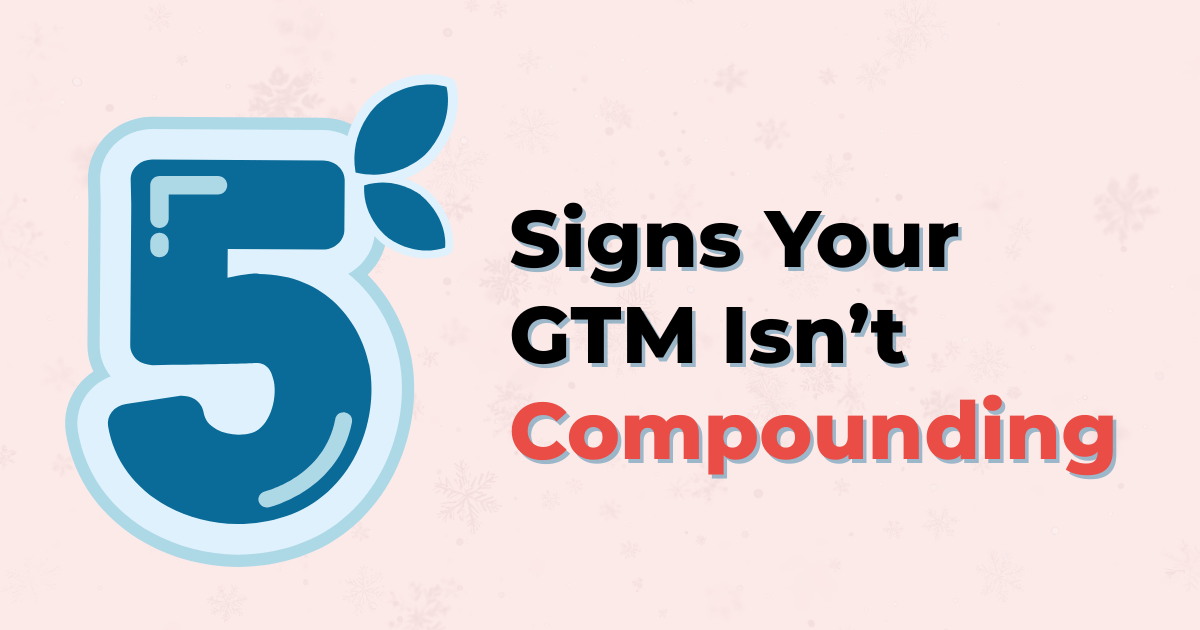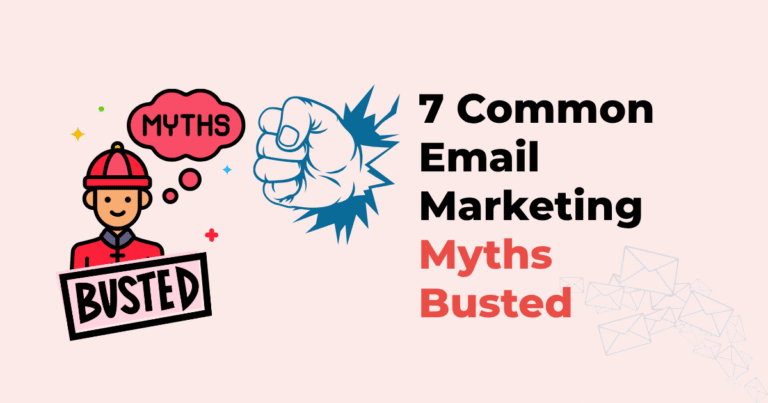Every founder reaches this frustrating point eventually. The team is busy, campaigns are live, and sales calls keep happening. But growth feels flat. It is not that the market stopped caring. It is not because your product is weak. It’s that your GTM engine stopped compounding. This is the most common gap I see.
Founders obsess over product development, data, and shipping cycles. Next, they approach GTM with short-term campaigns, scattered messaging, and a lot of guesswork. The result is constant activity but zero momentum. This article helps you understand why that happens and how to fix it.
Key Takeaways
- An engine of GTM compounds only when actions are linked to one another.
- What founders usually do is the right things in isolation, which kills momentum.
- If your pipeline resets every quarter, then your GTM isn’t compounding.
- Compounding requires clarity, data, alignment, and continuous learning loops.
- Founders should review their GTM every 90 days and bring in outside help when internal patterns repeat without improvement.
Why a Compounding GTM Engine Matters
A compounding GTM engine works like compounding interest. Each action reinforces the next. Each cycle adds more context. Every insight makes future decisions easier.
When your GTM compounds:
- Sales cycles shorten
- CAC drops
- Marketing creates leverage, not pressure.
- Product builds what improves revenue, not noise.
- Customer success fuels credibility and authority.
When it doesn’t compound, everything feels manual. You’re pushing hard every month, only to watch momentum disappear the moment you stop.
HubSpot’s 2024 benchmark reported that 64% of startups lose at least one quarter of potential pipeline due to disconnected GTM motions. McKinsey found that only 21 percent of SaaS companies apply systematic iteration to GTM, while more than 80 percent apply it to product.
This disparity is the root cause of non-compounding growth.
A Quick Look at What Compounding GTM Actually Looks Like
A real example looks like:
A founder runs one webinar that goes well.
That session becomes micro content.
That micro content fuels SEO.
SEO fuels inbound conversations.
Sales uses those insights to refine the pitch.
Product learns what resonated and builds accordingly.
The next webinar performs even better since the whole system learned.
That is compounding. One move reinforces five moves. One insight improves ten decisions.
The 5 Signs Your GTM Isn’t Compounding
1. Every quarter feels like a fresh start
If your pipeline resets every quarter, your GTM has no memory. A compounding engine carries momentum across cycles.
Self check:
At least half of this quarter’s pipeline should be from last quarter’s actions. Carry-forward energy should be created by referrals, nurtures, content leads, repeat buyers, and community.
2. Marketing and sales are not telling the same story
If you ask your marketing lead and your sales lead to describe what the ICP or value prop is, you’ll get different answers. Buyers get confused when the story is not consistent. Confusion kills compounding.
Self check:
Ask each team to write your ICP definition and core value prop in one sentence. Alignment is broken if they are not almost identical.
3. No iteration or learning mechanism exists.
If your GTM activities are not feeding the next cycle with insights, you’ll keep making the same mistakes every quarter. Compounding requires reflection and adaptation.
Self check:
- Do you run retros after campaigns?
- Do you track win/loss insights?
- Do you update messaging to reflect actual customer language?
If not, then your engine is static.
4. You chase channels instead of building momentum.
Founders jump from email to LinkedIn to events to cold outbound. Not because the channels are bad, but because the system around them is weak. If a channel is dying every few months, the problem is GTM coherence-not the channel.
Self check:
Does your messaging perform consistently across platforms? Otherwise, the platform is not the problem; the story is.
5. Customer, sales, and product feedback loops are broken.
When the feedback does not traverse across teams, your GTM will not improve. The product builds features nobody sells, sales sells stories the product cannot support, and customer success fights fires alone.
Self check:
Is there a monthly feedback session where sales, marketing, product, and CS share insights? If not, you are losing compounding data every day.
The Missing Piece: GTM Data Hygiene
You cannot compound what you cannot see. Most startups have messy CRMs, unclear attribution, and data in silos.
Clean GTM data is the backbone of compounding since it shows:
- Which segments convert fastest
- Which messages bring in high intent buyers?
- Which channels influence revenue
- Where the pipeline leaks
Without visibility, it’s all intuition. Intuition does not scale. Systems do.
The 5Cs: The Foundations of a Compounding GTM Engine
Here is a simple way to remember it. A compounding GTM engine would have the 5Cs.
| C | Meaning | Why it compounds |
|---|---|---|
| Clarity | ICP, value prop, narrative | Reduces waste and improves targeting |
| Consistency | Cadence and rhythm | Builds trust and recall |
| Coherence | Alignment across teams | Creates one unified buyer experience |
| Cadence | Regular iteration cycles | Turns actions into learnings |
| Compounding | Each motion strengthens the next | Exponential growth over time |
If any one of these breaks, your GTM loses momentum.
When to Self Assess vs. When to Bring Help
When to Self Assess (Every 90 days)
Run a 90 day GTM check for:
- Message consistency across sales, marketing, and website
- Pipeline quality vs. quantity
- Win-loss reasons
- Breakdown of Inbound vs Outbound vs Referral
- ICP accuracy
- Whether growth is predictable or accidental
This rhythm prevents drift and forces alignment.
When to Bring in an External Consultant
Bring in a third party when:
- Your inner monologue is How
- Teams cannot agree on ICP or value prop
- Pipeline has slowed for two or more quarters
- Everything feels busy, but nothing compounds
- You suspect blind spots you cannot see
- You want faster diagnosis instead of slow internal discovery
The right consultant reduces discovery time by months. They help teams to see patterns that they are too close to.
Frequently Asked Questions (FAQs)
1. What does a compounding GTM actually look like?
It’s a system where every campaign is better than the last, informed by customer insights into product, and where marketing is consistently fueling pipeline without reinventing the wheel.
2. How long before a GTM system starts compounding?
It is usually two to three quarters. Compounding is a rhythm; it becomes stronger every cycle.
3. Can an early-stage startup build a compounding GTM engine?
Yes. Actually, early stage companies are at an advantage with respect to speed. If they build compounding habits early, they scale faster.
4. What is the most common reason GTM doesn’t compound?
Inconsistent story, poor alignment across teams. In other words, when product, marketing, and sales do not share the same narrative, growth stalls.
5. Does each startup need an external consultant?
No. You only need one when internal patterns repeat without progress. If you don’t know what’s breaking or why, an outside view accelerates clarity.
References
- HubSpot State of GTM Report 2024
- McKinsey B2B SaaS Revenue Study 2023
- Gartner Revenue Operations Benchmark 2024
- Forrester Buyer Journey Trends 2024



